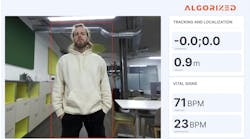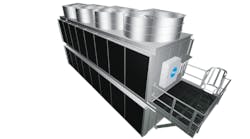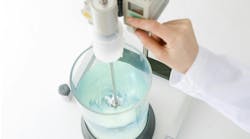Automotive crankshafts are exposed to enormous forces, and producing them requires precise machining. At Audi Hungaria Motor Kft., in Gyr, Hungary, crankshaft forgings are machined to final specifications for engines installed in various Volkswagen Group models, including Audi, VW, Skoda, and Seat. For the machining of these crankshafts, Audi Hungaria relies on the technology and experience of Ceratizit (www.ceratizit.com), a supplier of carbide inserts.
In Gyr, Audi builds its TT Coup and Roadster, and it has future plans to build the Audi A3 Cabriolets there. In 2006 more than 23,500 vehicles and close to 2 million engines were manufactured there, making Audi Hungaria the second largest exporter in Hungary.
Crankshaft machining at Audi Gyr, a city of 130,000 inhabitants, is situated 45 km from Hungary’s border with Austria. Audi Hungaria Motor Kft has been in operation outside the town since 1994, the site having been selected by Audi for various reasons: logistic connections are very good — within 50 km there are competitive subcontractors; a building with a floor space of 100,000 m2 was ready for business; and many people in the area speak German very well. Furthermore the Technical University of Gyr ensures that well-trained engineers and experts are available.
The plant has clean, wel llighted bays and three up-to-date production lines. For crankshaft machining Audi Hungaria relies on seven different types of inserts from Ceratizit, solutions that the supplier developed together with the machine manufacturer, GFM (www.agfm.com).
Zoltn Szathmri, who is in charge of production planning and tool technology in engine production at Audi Hungaria, explains: “The crankshaft is an essential component of the engine. It converts the linear movement into a rotational movement. The component is exposed to enormous forces.
“We manufacture six different crankshafts,” Szathmri continues. “The crankshafts are supplied in forged condition. Before machining, a crankshaft for the 3.0 TDI engine weighs 26 kg, after machining it still weighs as much as 18 kg.”
When asked to descrbie the reason that machining crankshafts can be so difficult, Szathmri offered these details:
“Two thirds of our production volume is comprised of the 3.0 TDI engine. The crankshafts for this engine are made of 42Cr- MoS4, and rough machining of these products represents a difficult task, as it consists of a hightensile material at the limit of soft machining. The hard forging skin virtually ‘eats away’ the tool.”
What happens to the tools?
Szathmri: “The blank crankshaft is irregular, and shows varying properties and the surface is not homogeneous. This means hard and irregular strain on the insert.”
How long will an insert last?
Szathmri: “When rough machining (rough milling of the main bearing and webs) the inserts are mounted on a planetary milling cutter, or side and face milling cutter. After machining around 250 crankshafts the inserts in the milling cutters have to be indexed.
Describe Audi Hungaria’s working relationship with Ceratizit?
Szathmri: “We have been working with Ceratizit for four years, and maintain a very open relationship; there are no secrets. For every new development, we are informed precisely about what has been improved. Ceratizit is in a continuous optimization process and is aware that coming to a standstill is dangerous, because the pressure is high: every year we invite tenders for the inserts, every year there are new test procedures and Ceratizit has to assert itself. We have been very successful for four years.”
Next, Lszl Jan, V6 product manager at Audi Hungaria’s mechanical production department, described the crankshaft machining process:
“There are several ways of looking at this. You could say that at the end of the production line a finished crankshaft comes out every 49 seconds. This is the cycle time of the line. Including the buffers (per line there are 5,700 cranks in the buffers) the flow time for 1,400 parts per day amounts to around six days.”
Before machining, a forged crankshaft for the 3.0 TDI engine weighs 26 kg; after machining its weigh drops to as little as 18 kg.
How important are the tools in this production line?
Jan: “The tools are particularly important. This line is very complex and f lexible. For instance, the investment in such a line is three times as high as for a line for the production of cylinder heads. For such a complex machining method, process security has to be very good. In automated machining, chain tool life has to be consistently high: 65% of the costs are tooling costs. The tools also play a very important role.”
What is the proportion of nonconforming material?
Jan: “The tolerances for a crankshaft are very close. The entire line is designed for this and is continuously optimized.
“Quality control is also very intensive,” Jan continues. “For the 3.0 TDI engine a 100% rupture test is carried out. To me, the quality of the final product is important, not so much the share of non-conforming material. In the last four years only two crankshafts have been returned to us, and this was due to faulty material, not to faulty machining.”
| Crankshaft Machining Step-by-Step An overview of crankshaft machining. Technique for crankshaft machining
Requirements with regard to the Ceratizit inserts
Materials used in crankshafts
Basic characteristics of Ceratizit inserts
Steps in the machining of a crankshaft A. Preparation
B. Hardening (induction hardening) C. Finishing
D.Quality test |










